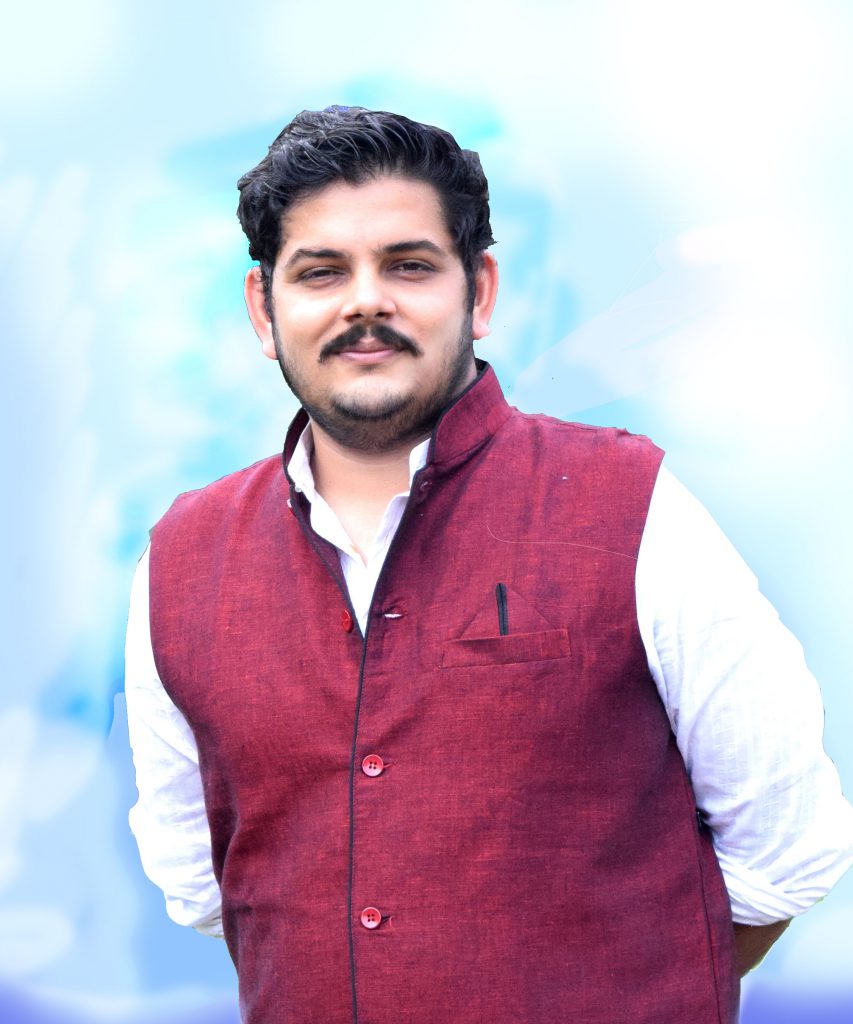Avanish Mishra’s Journey from Astrophysics into the Field of MSE
By Kyra Arena, Written Communications Assistant
When it comes to your major or career, have you ever had a change of heart? UConn’s former MSE Postdoctoral Researcher, Avanish Mishra, certainly had. By his educational background, he is a physicist with a specialization in astrophysics, something he describes as “quite an exciting field to explore.”
Although he enjoyed this area of concentration, while preparing for his Ph.D. entrance exams and interviews, he began to enjoy materials science and quantum mechanics. “Here, I saw how the principles of quantum mechanics dictate materials functionalities and responses,” says Mishra. And so, Mishra’s passion for MSE began. Thus, he decided to change career paths and get a Ph.D. in Computational Materials Science from the Indian Institute of Science, Bangalore, India, in 2019 under the guidance of Professor Abhishek Kumar Singh.
In his Ph.D., Mishra co-developed India’s first computational materials database aNANt. The database “shares the structures and electronic properties of computationally designed two-dimensional functional materials (MXenes) in a single platform” and currently contains data records for over 23,000 materials data. “As a graduate student, I worked on the first-principles modeling of materials and informatics, along with that I also learned about different length scales for materials modeling and respective challenges,” he says.
C. Barry Carter, MSE Professor, encouraged Mishra to apply for a postdoctoral position with Professor Avinash Dongare at UConn. “He told me about Professor Dongare’s research and exciting future possibilities for me,” states Mishra. “I liked the idea of learning a new set of materials modeling tools and extending my understanding of first-principlesmodeling onto a higher length-scale.” Hence, he joined Professor Avinash Dongare’s research group in May 2019 as a postdoctoral researcher.
Professor Avinash Dongare’s research group focuses on “the development and application of materials modeling, data analysis, and visualization methods to investigate structure-property relationships of materials as well as the evolution of microstructures ranging from atomic scale to mesoscale in various environments.”
“I really enjoyed working with Professor Dongare, especially because I felt he has been very supportive throughout, gave me constructive feedback during our discussions, and most importantly trusted me with utter confidence,” says Mishra. “I am very fortunate to have a mentor like him, and I feel he has contributed significantly towards my professional and personal development.”
One highlight from his time at MSE was getting to work as a part of the Center for Research Excellence on Dynamically Deformed Solids (CREDDS). Mishra and graduate student Marco Echeverria ran virtual experiments of shock deformation in metallic materials. They used this research to characterize defect structures, which helps validate current computational methods and guide future experiments. “I acknowledge all the members of CREDDS for their immense help and support,” states Mishra. “It gave me an excellent opportunity to work closely with experimentalists.”
In 2021, Mishra co-published five research papers alongside Professor Dongare and others. His published first-author paper focuses on fingerprinting shock-induced deformation via virtual diffraction, which helps to complement and explain experiential in-situ diffractograms and characterize materials without any destructive means. His second first-author paper centers on understanding the phase transformation mechanisms and factors affecting the dynamic response of Fe-based microstructures at the atomic scales, which is essential for studying various other properties of multiphase metallic materials.
“Avanish has always been excited to learn new capabilities and loves the challenge to build something of his own that can help us understand the science,” says Professor Dongare. “His time here working with me and the students in my group has led to several new computational capabilities at UConn that are currently being finalized for publication. It has been a pleasure working with him and to see him grow as a researcher.”
As a prior MSE professional staff member, Mishra is expanding his gained knowledge of atomistic modeling and machine learning with Professor Dongare and Professor Singh to understand materials response and get fundamental insights by characterizing atomistic structure using machine learning. His work is important for designing high-performance materials for applications in extreme environments. For instance, he works to find an alternative for existing materials, such as replacing or improving metals and alloys in various applications. “The work I carried out at UConn has direct application in designing promising materials for extreme applications and could be extended to various fields where the materials undergo slow or fast dynamic deformation. Understanding of dynamic deformation of metallic materials is fundamental to the maintenance of nuclear deterrents as well,” says Mishra.
Recently, Mishra started a position at Los Alamos National Laboratory (LANL) as a postdoctoral researcher. LANL’s goal is to solve national security challenges. Here, he analyzes atomistic structures using machine learning and extends that insight to the next level of modeling.
Mishra hopes that he will always be a part of the field of materials science and engineering. “I like doing research and want to mentor the next generation of scientists and engineers to make the world a better and safe place by addressing challenges in MSE,” he says. For those wishing to pursue a career in MSE, Mishra suggests that students should be curious, should ask questions without any fear of judgment, should be open to new ideas, and be keen to build connections with their peers. He also recommends meeting UConn’s two favorite dogs: Johnathan XIV and Officer Tildy! “Every time I saw any one of them, it made my day,” says Mishra.
Overall, Mishra’s journey into the field of MSE is inspiring not only for current students but for those who’ve recently discovered their passion for MSE. His narrative teaches people that it is okay to change career paths. Following your heart will not only make you successful, but you’ll have fun too!
Published: March 30, 2022
Categories: news, post doctoral researcher, research
Available Archives
